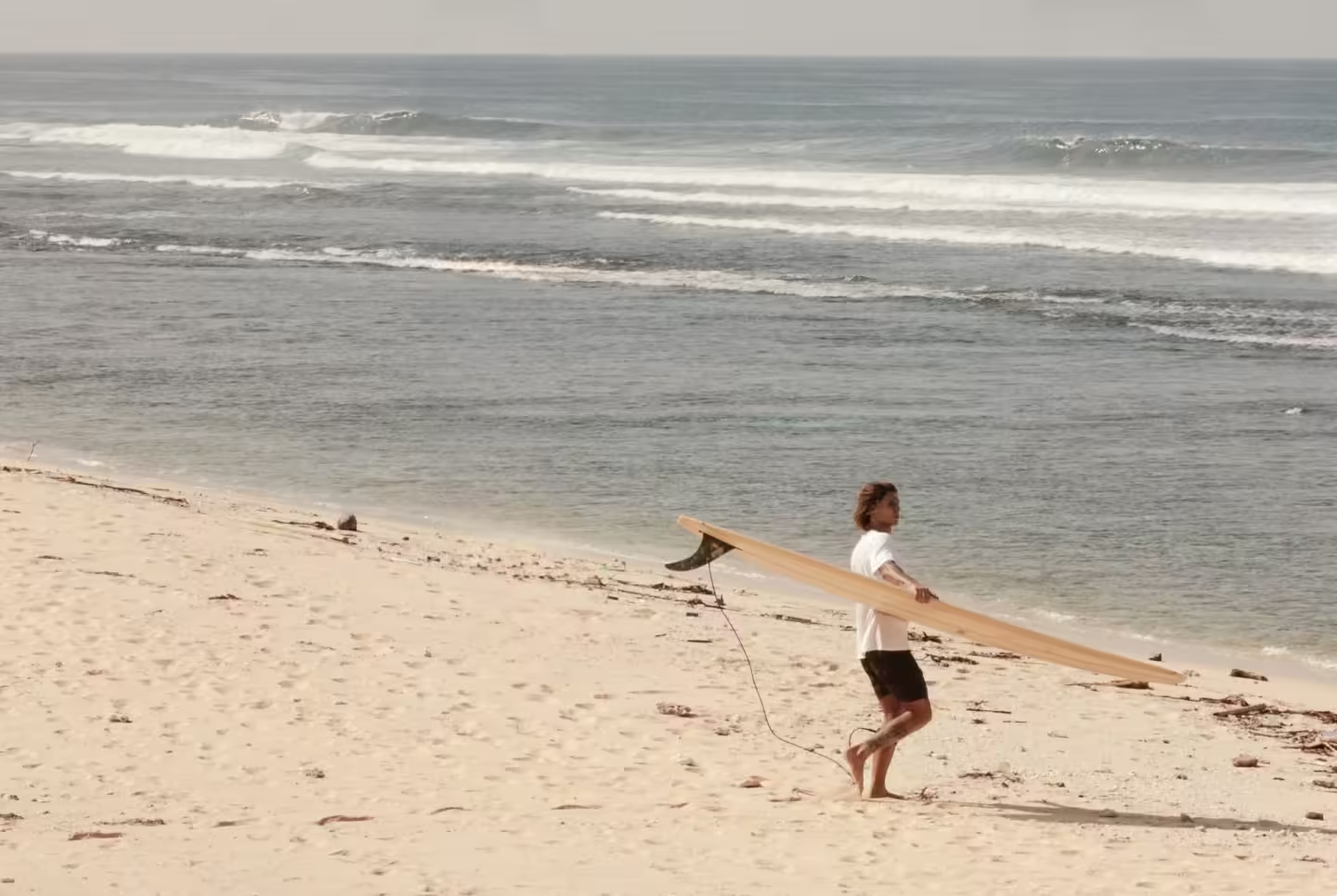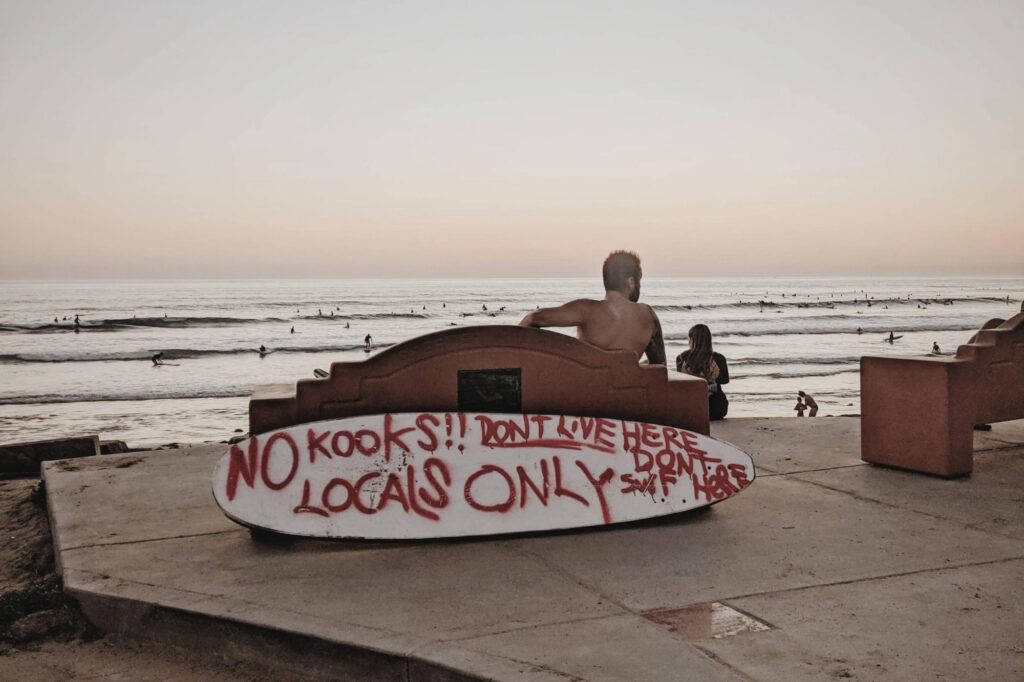Are Surfers Territorial? How To Deal With Surf Localism
When it comes to the question of whether or not surfers are territorial, there is no easy answer.
Territorial surfers are local surfers who are also part of the phenomenon called surf localism, which can be found in surf spots all around the world.
And while there may be some truth to the stereotype of the territorial surfer, it is important to remember that not all surfers fit this mold.
In fact, many surfers are very friendly, laid-back and follow the aloha lifestyle, while also being very welcoming to others on their home break.
And just because you can identify a surfer by their clothing, it does not mean that they will participate in this phenomenon.
Before we break down the phenomenon of territorial surfer let’s first understand what surf localism is.
Complete your surfer look and elevate your style with unique masterpieces.
Surfcasual offers the ultimate collection of comfy surfer’s t-shirts that perfectly blend class and stoke.
Explore our exclusive collection here.
What Is Surf Localism?
Surf localism is a phenomenon that exists in many surf spots around the world and it is characterized by a group of local surfers who try to keep outsiders away from their spot.
If you are traveling or just went surfing in a new spot you’re not familiar with, you might see those guys.
Territorial surfers or surf localism is when a group of surfers tries to deter others from enjoying the waves at their local break.
This used to be done through physical violence, but while this is no longer as prevalent as it once was, localism can still be a major issue at many surf breaks around the world.
Instead, other forms of localism violence are used, such as yelling, shining lights in other surfers’ eyes, and even dumping trash in the water.
There are many reasons why surfers may become territorial, but the most common one is relatively simple – locals want to protect their spot from being crowded by newcomers.
While surf localism is not a new phenomenon, it has been getting a lot of attention in recent years due to the increase in the popularity of surfing and it’s the overpopulation in some spots that creates it.
Because great surf spots are so cherished and the sport’s popularity is increasing, waves near populated areas can get crowded quickly.
As a result, some regular surfers of a spot become very territorial; rather than searching for less-crowded waves, they try to keep other surfers out of their favored break.
Localism can also be a way for surfers to create a sense of community and belonging in their local break, while also expressing their tribe’s emotions which leads to strong territoriality.
But what does surf localism really look like?
Types of Surf Localism Expressions
Since mostly there are no regulations in surfing spots, locals often take advantage of newcomers, taking the rules into their hands and hoping that they will feel so unwelcome that they’ll go somewhere else.
Most of the aggressive behavior displayed by these surfers is motivated by frustration and a selfish desire to control access to certain spots.
Surfing localism can be in any way shape or form, such as:
Signs and barriers – Hostile locals post warning signs and may try to physically block access to a surfing spot.
Verbal abuse – Local bullies frequently use insults and shouting to intimidate surfers they don’t know.
Hostile surfing – Surfers who act aggressively toward non-locals often do so by purposely ruining their rides with disruptive maneuvers and turns, such as dropping in, blocking, leash-grabbing, and angling in front of them.
Vandalism – Aggressive locals often damage surfboards and vehicles belonging to non-locals in order to keep them from returning to the surf spot.
Physical violence – Some extreme cases include physical attacks on unwanted visitors, and in very rare circumstances, some have even lost their lives.
We all want to be respected, especially by strangers who don’t know us – it’s human nature. And while surfing is an amazing sport, localism can cast a dark shadow over the fun.
However, there are ways to stand up to this abuse and still enjoy quality waves. Now it’s time to give back with respect thanks to the aloha lifestyle. Get ready to feel empowered!
How To Deal With Territorial Surfers
If you find yourself being harassed by local surfers or if you are worried to travel to a certain spot because of localism, don’t worry, there are ways to deal with it.
Observe The Area
The best way is to try and talk to the locals before paddling out. This way you can get to know them and let them know you.
You could also ask a friend who surfs or surfed at that spot what it’s like. Not just how the waves are (I’m sure they are great), but what is the vibe around there, who you should steer away from, or just general advice and precautions for that specific spot.
Once you reached the area, take a look – observe the length of lulls, the number of boards in the water, and where people are lining up.
Get an idea of what are the rules, who’s waiting, and who’s taking the ride. Is the place look calm or chaotic? Are there any empty breaks? Is there a favorable side that most surfers turn to?
If you answer all those questions you will have a better sense of the spot’s competition over waves.
Be Friendly
Whether or not you are a friendly person, it is important in surfing, and just as important in life overall, to be calm, relaxed and preserve good vibes.
Be friendly and speak to others with a smile. Be nice and even if you want to ride that awesome wave, if necessary, spread your kindness and give it to someone else, there will be more.
Surf With a Friend
Two is better than one, and it might be a better idea to surf with your friend before entering a new surfing spot for the first time.
However, don’t show up with ALL of your friends, you don’t want to intimidate the crowd and absorb attention.
Respect The Locals
Even if it’s hard and unfair sometimes, you should always respect other people and especially the locals in a new spot.
Make sure you know or learn, the surf etiquette as some surfers can be very sensitive to it. Surfers who are disrespectful and are unknown to locals are easy targets.
Know The Vibe
See that guy who speaks to others, always in the best position and taking most of the waves? Most chances are he’s local.
When you’re at the beach, take notice of how other surfers are behaving. If they look like they’re enjoying themselves and having fun, there’s a good chance the conditions are ideal.
However, if people around you seem tense or unhappy, be extra cautious when getting in the water.
Be Cool
Stay cool, even if you see or hear emotional anger. When you’re new to a surf spot, you have to be chill and tolerant toward others. Immediately apologize for your mistake and do what you can to contain the situation.
Despite that, show confidence when you’re being treated unfairly. It might stop future confrontations and earn some respect from any reasonable locals.
When a situation is escalating to physical violence, which is very uncommon these days, ride the next wave all the way to the shore. You don’t want to be involved.
If someone provokes you while surfing, paddle over to other surfers who look neutral. Having other boards and bodies around will make it harder for the attacker to cause harm even if no one else steps in and helps.
Conclusion
It is somehow easy to understand the frustration of locals are feel their waves are being stolen by the crowd.
They can’t enjoy the waves as they used to in the past due to the increased popularity of surfing.
However, nobody should show violence in any shape or form and we want to spread the aloha awesomeness vibes so we could all enjoy the waves together.
Territorial surfers are gladly not what they used to be in the past. The easiest way to stay away from conflict and enjoy the waves is to know the surf etiquette, be respectful and stay thoughtful.



